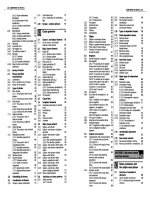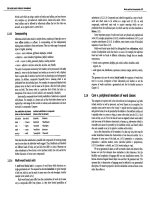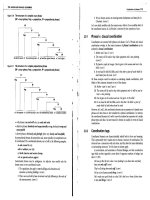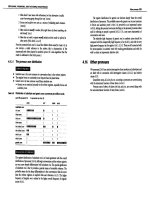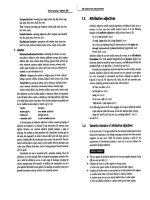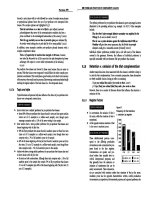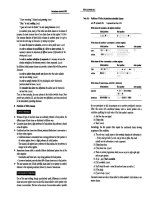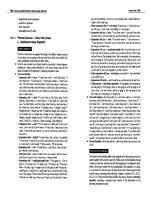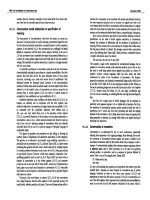Chapter 109. Disorders of Platelets and Vessel Wall (Part 2) ppsx
Bạn đang xem bản rút gọn của tài liệu. Xem và tải ngay bản đầy đủ của tài liệu tại đây (92.01 KB, 5 trang )
Chapter 109. Disorders of Platelets
and Vessel Wall
(Part 2)
Thrombocytopenia
Thrombocytopenia results from one or more of three processes: (1)
decreased bone marrow production; (2) sequestration, usually in an enlarged
spleen; and/or (3) increased platelet destruction.
Disorders of production may be either inherited or acquired. In evaluating a
patient with thrombocytopenia, a key step is to review the peripheral blood smear
and to first rule out "pseudothrombocytopenia," particularly in a patient without an
apparent cause for the thrombocytopenia.
Pseudothrombocytopenia (Fig. 109-1B) is an in vitro artifact resulting from
platelet agglutination via antibodies (usually IgG, but also IgM and IgA) when the
calcium content is decreased by blood collection in ethylenediamine tetraacetic
(EDTA), the anticoagulant present in tubes (purple top, often) used to collect
blood for complete blood counts (CBCs). If a low platelet count is obtained in
EDTA-anticoagulated blood, a blood smear can be evaluated and a platelet count
determined in blood collected into sodium citrate (blue-top tube) or heparin
(green-top tube), or ideally a smear of freshly obtained unanticoagulated blood,
such as from a finger stick, can be examined.
Figure 109-1
Photomicrographs of peripheral blood smears.
A. Normal peripheral blood. B.
Platelet clumping in
pseudothrombocytopenia. C. Abnormal large platelet in autosom
al dominant
macrothrombocytopenia. D.
Schistocytes and decreased platelets in
microangiopathic hemolytic anemia.
